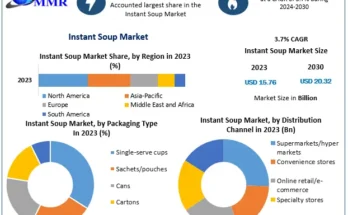Soy Protein Market: Overview
As consumers turn away from animal-based proteins and toward plant-based dietary sources, the demand for plant-based protein is rising. Consumers’ worries about gaining weight, various food safety concerns, and animal suffering are the main drivers of this trend. Nowadays, consumers choose plant-based proteins over animal proteins in the hopes of losing weight because they are thought to have weight loss characteristics. Compared to animal proteins, soy protein is lower in fat and calories and higher in fibre and vital minerals. These elements are luring consumers who care about their health to plant-based proteins.
The presence of different alternatives in this industry is a major factor that is preventing market expansion. Plant-based proteins are quickly gaining popularity around the world, and where soy cannot be utilised, producers are switching to other plant-based proteins such pea, wheat, rice, pulse, canola, flax, and chia protein. For instance, pea, wheat, and rice proteins are widely substituted for soy protein, particularly as a result of consumers’ unfavourable perceptions of soy products. By doing this, the food and beverage business as well as other industries require less soy protein.
Lockdowns and restrictions on travel and transportation caused by the global pandemic have had a serious negative impact on economies and industries. The food and beverage sector is regarded as one of the most severely affected industries in the world and experienced significant supply chain disruptions, distribution cancellations, and business closures as a result of the pandemic. Lockdown situations in key soy protein producing nations have an impact on the raw material supply chain. Due to the growing demand for healthy food options, soy protein-based products will be consumed more frequently as things get better, which will result in a parallel expansion of the market.
Most of the major soy protein producers are inclined to extensively spend in innovation or research and development activities, not only to achieve the highest quality products but also to learn about different additional uses for soy protein. Companies are eager to collaborate in order to improve their capacity for innovation. Ten significant research and development facilities are operated by DuPont globally. The business carries out important research in a variety of sectors, allowing it to provide a wide selection of cutting-edge labs and technical support centres. It makes investments in process improvement and R&D to create novel products for clients.
Cargill Incorporated is committed to ongoing technical advancements, research, and development, which enables the business to produce goods with top-notch functional qualities. Through new, enhanced goods and creative cost-cutting strategies, it hopes to bring differentiated value by using its research and development expertise.
To further its technological innovation, BASF SE teamed with Shanghai Jahwa United Co., Ltd. in 2021. This long-term relationship aims to hasten product creation and development while advancing the business’s viability in China.
Click Here To Get Sample Copy of Soy Protein Market Report: https://analyticsmarketresearch.com/sample-request/soy-protein-market/7638/
Global Soy Protein Market: Major Players
Shandong Wonderful Industrial Group
Goldensea Industry
Hemlet
CHS
Tiancheng Agricultural Development Group
Yuwang Group
Solae
DuPont
Shandong Yuxin Bio-Tech
ADM
Hongzui Group
Nutraferma
Gushen Biological Technology Group
Cargill
Global Soy Protein Market: Types
Soy Protein Isolates
Soy Protein Concentrates
Soy Protein Hydrolysates
Global Soy Protein Market: Applications
Food Industry
Feed Industry
Defatted and dehulled soybean meal is used to isolate and process soybeans into soy protein components. One of the most affordable forms of protein is soy protein components, which also contain oligosaccharides, fibres, and amino acids that are similar to those found in other bean pulses. They are a sought-after ingredient for milk beverages due to their low fat content and great dispersibility. Additionally, soy protein can be employed in a variety of cooking processes due to its abilities to gel, absorb, whip, and bind. High protein content, a longer shelf life, and improved stability in a range of food applications are the defining characteristics of these components. In order to produce weaning foods, dairy substitutes, bakery and confectionary goods, flatbreads, soups and sauces, and ground meat, they are commonly used.
To Know More, Click here: https://analyticsmarketresearch.com/reports/soy-protein-market/7638/
Key Points:
Define, describe and forecast Soy Protein product market by type, application, end user and region.
Provide enterprise external environment analysis and PEST analysis.
Provide strategies for company to deal with the impact of COVID-19.
Provide market dynamic analysis, including market driving factors, market development constraints.
Provide market entry strategy analysis for new players or players who are ready to enter the market, including market segment definition, client analysis, distribution model, product messaging and positioning, and price strategy analysis.
Keep up with international market trends and provide analysis of the impact of the COVID-19 epidemic on major regions of the world.
Analyze the market opportunities of stakeholders and provide market leaders with details of the competitive landscape.




